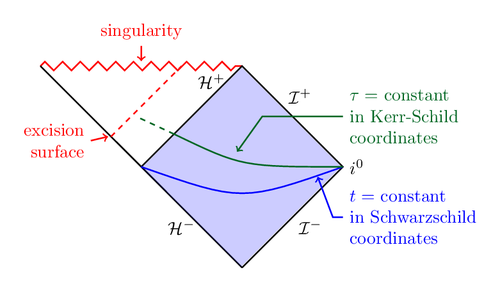In establishing ADM or 3+1 decomposition, one starts with choosing a foliation $\Sigma_t$ where t is a scalar function and $\Sigma_t$ is demanded to be a spacelike slice, i.e. with time-like normal vector field.
In the case of Schwarzschild black hole, the constant time slice (coordinate $t$ in Schwarzschild metric) seems (to me) a natural choice. But recalling that $t$-coordinate inside the Schwarzschild horizon turns into space-like while $r$-coordinate turns into time-like. I'm really puzzled in thinking about ADM decomposition together with black hole, especially inside the horizon.
One might say ADM decomposition is mostly concerned with isolating system and hence large distance, then shall one need to impose an inner boundary at the horizon? Appreciate any comments!

